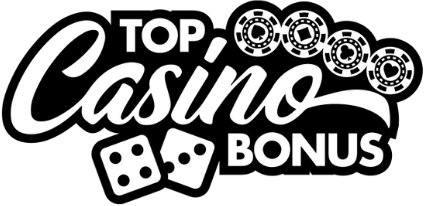How to play Omaha poker: key differences from Hold’em
Omaha poker gets tossed around like it’s just a cousin of Texas Hold’em, and I’ve seen too many players belly-flop at the Omaha table thinking they can wing it with Hold’em habits. I’m telling you straight: if you’re walking into an Omaha game and playing it like Hold’em, you’re stepping into a buzz saw. This game demands more calculation, sharper hand reading, and above all, respect for combinations that don’t exist in Hold’em. It’s a subtle, beautiful beast with traps for those too lazy to learn its rhythm.
Table of contents
Understanding the core differences between Omaha and Hold’em
Let’s not pussyfoot around, Omaha might share Hold’em’s structure, but that’s where the resemblance ends. Both games deal with community cards and betting rounds, sure. But the way you build your hand in Omaha versus Hold’em is night and day. Most rookies get frustrated because they don’t grasp that Omaha demands tighter discipline and a much stronger starting range.
Starting hands: double the hope, double the danger
In Texas Hold’em, you get two hole cards. Simple. In Omaha, it’s four. That alone changes everything. Why? Because in Omaha, you must use exactly two of those four cards in combination with three of the five community cards. No exceptions. And I’ve seen too many players go broke chasing straights or flushes, blind to the rule.
You’ll find a complete breakdown of Hold’em mechanics in our Texas Hold’em guide, and it’s a critical foundation, but it won’t get you through an Omaha session unscathed unless you unlearn some instincts.
Hand strength in Omaha is a fickle mistress
In Hold’em, top pair with a good kicker can win pots. Don’t count on that in Omaha. Here, people are drawing to nut straights, second-nut flushes, and wrap draws, massive potential that makes single-pair hands trash. If your hand isn’t aiming for the nuts, you’re already behind.
And remember, with four hole cards, everyone has more possibilities to hit something. That means the average winning hand is a lot stronger. Beginners chase draws that would be viable in Hold’em but absolute garbage in Omaha. It’s not just about having outs, it’s about owning the best possible ones.
Reading boards: the underestimated art
Here’s where things get dicey for newbies. Reading the board in Omaha demands more than just a glance. You’ve got to do backflips in your head to account for all the ways players could connect to create bigger hands than yours. If a board shows three of the same suit, don’t assume your second-nut flush will hold. There’s a good chance someone’s got the nuts, and a backup.
The wrap draw and combo mindset
This right here separates the greenhorn from the grinder. A wrap draw is when you hold many straight-drawing outs, I’m talking 13, 17, or more cards that can complete your straight. Properly identifying these is where you start playing Omaha the way it’s meant to be played.
One night in 2004, I flopped a 17-out wrap at a high-stakes table in Vienna. Someone with two-pair was betting like they’d already won the pot. I check-raised the turn, hit the nut straight on the river, and got paid off. That’s Omaha, power is in draws, not just made hands.
Bankroll management tailored to Omaha
Now let’s talk logistics. Because Omaha is a high-variance game, you won’t get far without careful bankroll control. Pot control is essential, but so is funding your play through responsible and flexible financial channels. The modern player’s toolbox needs to go beyond credit cards.
Solid banking methods for online Omaha
If you’re banking like it’s 1999, you’re asking for trouble. Use specialized, efficient methods. One smart choice is EcoCard (EcoPayz), they let you move money quickly, and their footprint is solid in poker circles. Then there’s EntroPay, a virtual card system that gives you flexibility without handing over your primary details every time.
If you’re old-school or playing serious volume, bank and wire transfers still have their place. They’re the tortoise, not the hare, but they get the job done. And for an all-around look, don’t skip our full comparison of casino banking methods.
Strategizing beyond preflop play
Most players can learn which hands to fold preflop, thinking beyond that is where many struggle. In Omaha, postflop decision-making is the lifeblood of your win rate. It’s a rhythm of assessing equity, managing pot size, and exploiting position, every step of the way.
Positional awareness is non-negotiable
Position means more in Omaha than just “acting last.” It means gathering more information before moving your chips. If you’re in late position with a draw-heavy flop, you’ve got options. Early position? You’re navigating blind. One of my worst Omaha sessions came from underestimating position, I was squeezing the trigger out of turn and paid dearly for it.
Psychology and table dynamics
Even with supreme technical skill, if you can’t read the table’s vibe, you’re flying blind. Omaha is notorious for suckouts and volatility. You’ve got to stay cool-headed. Read frustration in your opponents. Spot who’s chasing. Catch who’s tilting after a busted draw and press them.
The psychology of loss and greed creeps up quick with swingy games like Omaha. I’ve seen once-rational players melt into betting machines after one bad beat. Discipline beats emotion, every time. You either learn that early or you learn it the hard, expensive way.
Final thoughts: respect the complexity
Omaha isn’t a game you master overnight. It humbles fools and rewards the patient. You won’t bluff your way to victory against competent players. You won’t survive long with mediocre hands. And you certainly won’t make money unless you think ahead, not just for the hand, but the meta-game.
If you’re gonna sit at the Omaha table, live or online, you owe it to yourself to understand its depth. Relearn what you know from Hold’em, and adjust accordingly. The nuance isn’t just charming. It’s vital. Omaha rewards relentless learners. Keep your wits sharp, and your ego in check. The game doesn’t care who you were in Hold’em.





0 Comments